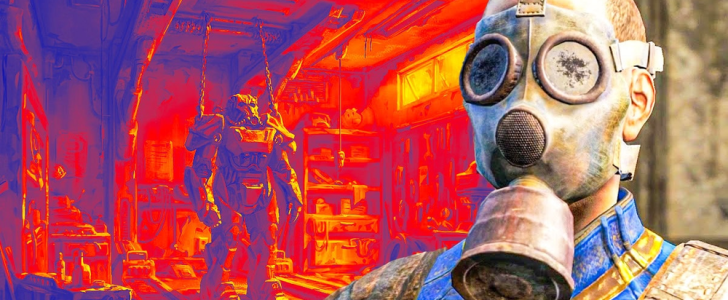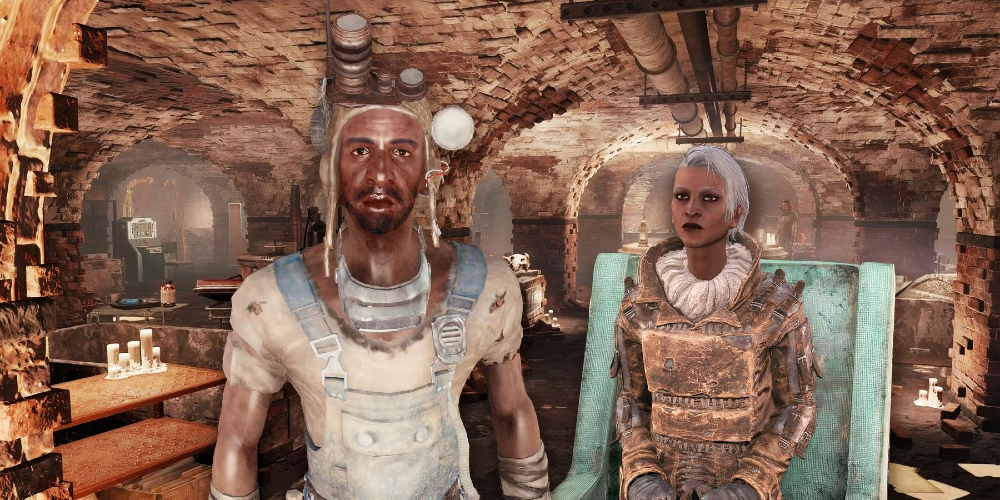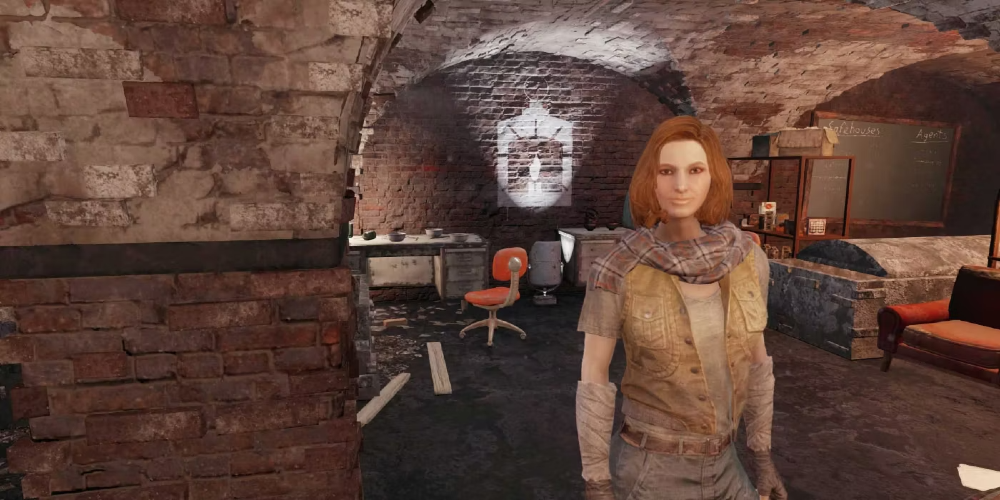Fallout's The Railroad, Explained

Part of what makes the Fallout franchise so appealing is its ability to weave a narrative together from the dark nature of its world, and seeing how different groups of people react to the wasteland they now live in. This has given rise to various factions across post-apocalyptic America with their own power and ideologies. Some of these factions are what one would expect: from selfish and murderous raiders to self-righteous warriors bent on imposing their own brand of order.
There is a middle ground between absolute chaos and order though. Some groups form their ideologies around a specific, altruistic goal that they wish to accomplish, wanting to bring some good to the Wasteland. This is perhaps best exemplified in the ongoing efforts of the Railroad, a group dedicated to ensuring that synths are given the same rights as human beings.
The Origins Of The Railroad

The Railroad believes that synths deserve human rights. For this reason, they have organized to help androids find freedom and security.
As the name implies, the Railroad is meant to be a callback to the 19th-century Underground Railroad, which helped escaped slaves get to states where slavery was abolished. While the Railroad in Fallout has similar motivations and does occasionally help liberate human slaves that have been taken by the many other violent and depraved factions in the world, their primary focus is on synths. More specifically, the Generation-3 synths were created by the Institute, meaning they have at least been in existence since the 2220s.
Initially, Generation 1 and 2 synths were more robotic and easier to distinguish from an actual human being. Once the Generation 3 synths came online across the wasteland though, the line between organic and android became blurry. People in the wasteland began to question whether, because these androids could seemingly imitate human life, whether or not they deserved the same rights as organic people. To the members of the Railroad, an android being self-aware means it must be having a similar experience to the human condition, and thus were entitled to the same rights and protections that humans have. Though ironically, members are still divided on whether Generation 1 and 2 synths deserve the same recognition. Coupling this with the fact that the Institute treats the synths as slaves, the Railroad found something worthy in the androids and began helping to facilitate their escape and relocation.
Their beliefs were not very popular. Public opinion on synths, especially the newer, more human-looking models, was largely negative. Many were of the opinion that synths were attempting to infiltrate settlements and replace real humans before attacking the people they had been deceiving. This wasn't an entirely unfounded belief, as the Institute made regular use of the synths as covert operatives to manipulate the politics of the wasteland in their favor so that they could remain autonomous and continue to hoard their technology. Adding to this, most people believed Generation 3 synths were just like their predecessors; more machine than anything else. So, when the Railroad began advocating for their rights, they were viewed as either a joke or as a traitor to other organic beings.
The Structure Of The Railroad

The Railroad has a network of informants and agents operating in a pyramid structure. They do have soldiers, but they are not a formal military.
Now, the main issue with the Railroad is that it does not have the advanced technology of the Institute, nor the firepower of the Brotherhood of Steel, or even public support like the Minutemen do. They are true underdogs, operating a clandestine network to pass information, relocate those in need, and continue the fight for synth freedom. As a consequence of this, they are perhaps not quite as well-supplied as they would like to be. That being said, they do have an established infrastructure to support themselves.
The Railroad is organized much like a pyramid. At the very bottom are "tourists" a collection of informants who are not formal members of the Railroad. They are sympathizers who act as informants, letting the Railroad know about runaway synths that have escaped the Institute, allowing them to reach these lost androids before they meet the wrong people. Above tourists are people known as "runners" and safehouse owners. Slightly above them are the field operatives, who, for their own safety, are given codenames so as not to be targeted by anyone especially bigoted against synths. Finally, the last group is the HQ members, who have access to all the information regarding Railroad operations.
While their main efforts take the shape of a spy organization, best exemplified by how their agents place surveillance devices across various settlements, they do have a standing fighting force. This military force was small and not very formidable until the arrival of Tinker Tom. Using his genius, Tom revolutionized the tech that the Railroad could bring into battle, turning scrounged equipment into top-of-the-line, specific gear. This would formally outfit much of the Railroad's combatants, known as "heavies."
While not a large or formal military, these soldiers are more than capable of defending their faction if push comes to shove. The Railroad also employs medical and technical professionals when they help a runaway synth, giving them new memories and performing facial reconstruction in order to hide them from the Institute, and the people of the Commonwealth.
The Railroad In The Present Day

The Railroad was first encountered in Fallout 3. They become a faction players can join or oppose in Fallout 4.
The Railroad continues well into the present day of Fallout. They were first encountered in Fallout 3, where the Lone Wanderer was asked to help an Institute scientist recapture a runaway android. A Railroad agent appears in opposition to this and requests the player help them fake the android's death so it can escape. Both sides offer well-thought-out arguments to support themselves, but ultimately, it is left up to the player what is to become of the android with the choices they make affecting their karma points in the game. While not the most groundbreaking introduction, it was certainly an excellent way to demonstrate the fundamental struggle of the Railroad.
Their next appearance in Fallout 4 was far more substantial. They were one of the major factions the Sole Survivor could interact with, and even join if they so chose. Allying themselves with the Railroad could have negative consequences for their relationships with other factions such as the Institute or the Brotherhood of Steel, both of whom are opposed to the ideology of the Railroad. That being said, should players not join the Railroad and align themselves with a faction that does not share their views, the Railroad could become hostile to them.
Despite not being the most dominant or influential group, the Railroad's strong principles make them a significant contender.They have managed to build themselves up into a network that spans across the wasteland and help others with no means to evade capture or destruction at the hands of far more dangerous factions. The Railroad is full of survivors, and they have been beaten down before, only to rise back up stronger than they were before.



